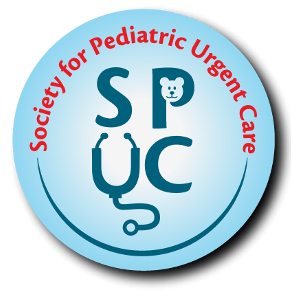ALERTS
- Cerebral anuerysm
- Meningitis
- Encephalitis
- Abscess
- Brain Tumor
- Sinus Venous Thrombosis
AGE CONSIDERATIONS
- Toddlers: may manifest as irritability
- Unusual complaint in younger children
DIFFERENTIAL DIAGNOSIS
- Tension
- Migraine
- Cluster
- ENT infection (otitis, sinusitis pharyngitis, viral infection,etc)
- Meningitis
- Psychogenic
- Seasonal allergies
- Vision change- need for glasses
- Brain tumor
- Pseudotumor
- Hypertension
- Toxins (Carbon monoxide, medications, drugs)
- Head trauma
- CNS bleed
- Depression
- Oral (Dental abscess, Temporomandibular joint strain)
EVALUATION
HISTORY
- General health, fever, poor PO (meningitis)
- Mental status (encephalitis)
- Nasal discharge, tooth pain (sinusitis, dental infection)
- Abrupt onset, extreme pain (ruptured AVM, subarachnoid)
- Frequency and duration (steadily worsening more concerning)
- Timing and circumstances (present on waking or awakening from sleep raises concern for tumor), tension headaches occur most frequently during the school day (tension)
- History of trauma
- Aura, relationship to food ingestion (migraines)
- Associated vomiting
PHYSICAL EXAM
- General appearance: sick or well?
- Blood pressure
- Meningeal signs
- Head and neck exam
- Complete neurologic exam including fundoscopic exam: are there any focal findings, such as ataxia, hemiparesis, papilledema
- Vision
CONCERNING FINDING
- Brain tumor red flags: nocturnal headache or pain on arising in the morning, worsening over time, associated with vomiting, behavioral changes, polydipsia/ polyuria, history of neurologic deficits (clumsiness, diplopia, et).
- Occipital pain: concern for posterior fossa tumors (studies have found to be statistically significant).
- Migraine can be associated with nausea and vomiting.
- Some children with migraines may develop focal neurologic findings as a part of their migraine syndrome
- Acute recurrent pattern with symptom free intervals can be seen with migraine, tension headache, cluster headache, neuralgias.
- Toddlers cannot communicate headache, but symptoms may consist of irritable, vomiting, photophobia
DIAGNOSTICS TEST
- Should not be needed for routine headache
- Consider transfer if LP or CT is needed for diagnosis
MANAGEMENT
TRANSFER/ADMIT CONSIDERATIONS
- Consider if meningitis, aneurysm, psuedotumor, brain tumor or increased ICP are being considered
REFERRAL
- Neurology: chronic headaches, unclear etiology, focal neurologic deficits
- Ophthalmology
TENSION HEADACHE
Treatment
- Benign: Tylenol, ibuprofen
Discharge Criteria
- Pain controlled with PO medications
- Able to tolerate PO
Follow Up
- Primary care physician
- Encourage fluids
Prognosis
- Very good
Anticipatory Guidance
- Treat early when headache starts
- Return if looks ills, worsening, stiff neck, vomiting, fever
MIGRAINE
- Consider if this is in the scope of practice for your urgent care
Treatment
- Analgesics (Tylenol, Ibuprofen, Ketorolac), Antiemetics (Reglan, Compazine, Zofran), Antimigraine (Sumatriptan, Ergotamines)
- Lower lights and decrease noise level
Discharge Criteria
- Pain controlled with PO medications
- Able to tolerate PO
Follow Up
- Primary care physician
- Encourage fluids
- Medications as indicated
- Avoid stimuli (for migraines, stress, fatigue, anxiety, known food triggers)
Prognosis
- Generally very good
- Migraine: 50% undergo spontaneous remission, as adults 5-10% of men and 10-20% of women have migraines
Anticipatory Guidance
- Return if headache is not controlled with po meds,looks ills, worsening, stiff neck, vomiting, fever
- Encourage sleep
PSUEDOTUMOR
- Consider if this is in the scope of practice for your Urgent Care
MANAGEMENT
- LP with opening pressure
- CSF removal
REFERENCES
- Fleisher G, Ludwig S, Henretig R, eds. Textbook of Pediatric Emergency Medicine. 5th Edition. Philadelphia, PA: Lippincott, 2006.
- Lewis D, Qureshi F. Acute Headache in Children and Adolescents Presenting to the Emergency Department. Headache 2000: 200-203.
- Haslam RH. Headaches. In: Nelson Textbook of Pediatrics. 17th Edition. Philadelphia, PA: Saunders Elsevier, 2004.
- Uptodate: http://www.uptodate.com
